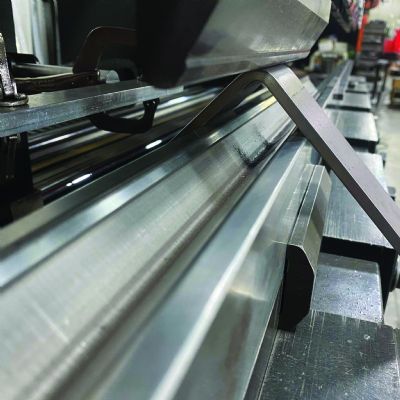The Four Characteristics of Sheetmetal That You and Your Press Brake MUST Know
January 1, 2016Comments
In press brakes, crowning compensates for frame deformation. Manage crowning by knowing your steel and employing robust estimating and forecasting software.
One of the unavoidable side effects of press-brake operation is frame deformation. We’re bending steel parts with other steel, that of the press brake, which for physical reasons will deflect. In particular, the ram will bow in the center (Fig. 1). At that point the punch will be farther away from the die, resulting in a wider angle and yielding a bent profile with a boat-like shape (Fig. 2). Even a small angle difference can turn metalforming into a process full of pitfalls.
But how much crowning is just the right amount? Most manufacturers rely on data tables calculated based on the press-brake structure and sheetmetal characteristics as declared by the foundry. Everything is fine, right? Nope. Actually, this method often does not work because sheetmetal behavior is unpredictable. It has a high variability that depends on a series of factors. Knowing them and, when possible, compensating for them is essential in order to save time and material in tests and samples. Especially today, in an age of smaller batches, obtaining the correct bend angle on the first try is a must.
1) Not All Steels are Created Equal
What does “A36” mean when describing steel? Steel is labeled according to its yield strength. This value is highly variable and depends on impurities in the material and imperfections in production techniques. To avoid the risk of building weak structures, regulations require a declaration of the minimum yield strength. So, any steel with a yield strength greater than 36,000 psi will be labeled as A36.
As a result, 41,000-psi steel still will be sold as A36, in spite of being 13 percent harder. The increased resistance will impart a higher force on the press brake, which will cause the ram to bow even more. For instance, switching from a 36,000- to a 41,000-psi steel will result in a deformation difference of roughly 0.002 in. in depth. Yet, this small curve causes a change of nearly 1 deg. in a 0.3-in. V-die (Table 1).
In other words, a thickness of less than that of a single sheet of paper (less than 0.04 in.) causes remarkable differences. Bear in mind that narrow openings such as these often are used to bend thin sheet for high-quality products.






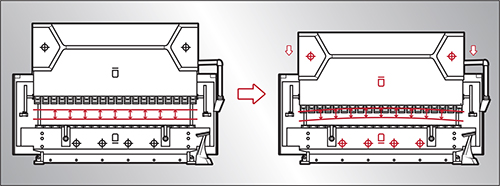
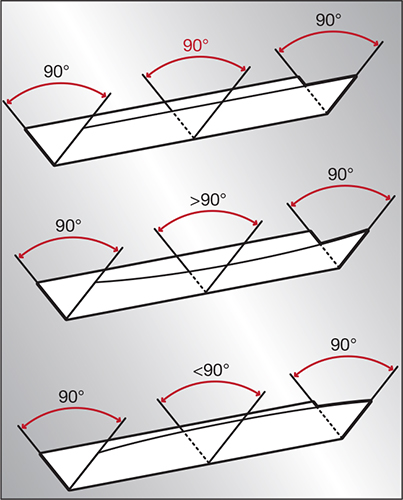
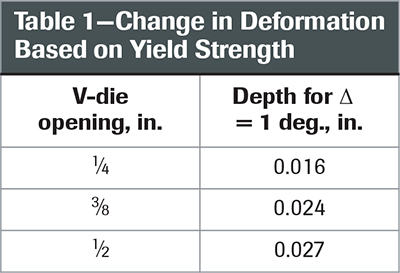

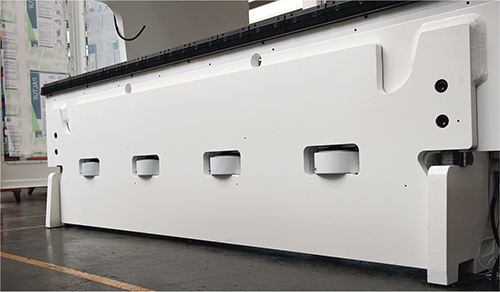

 Video
Video